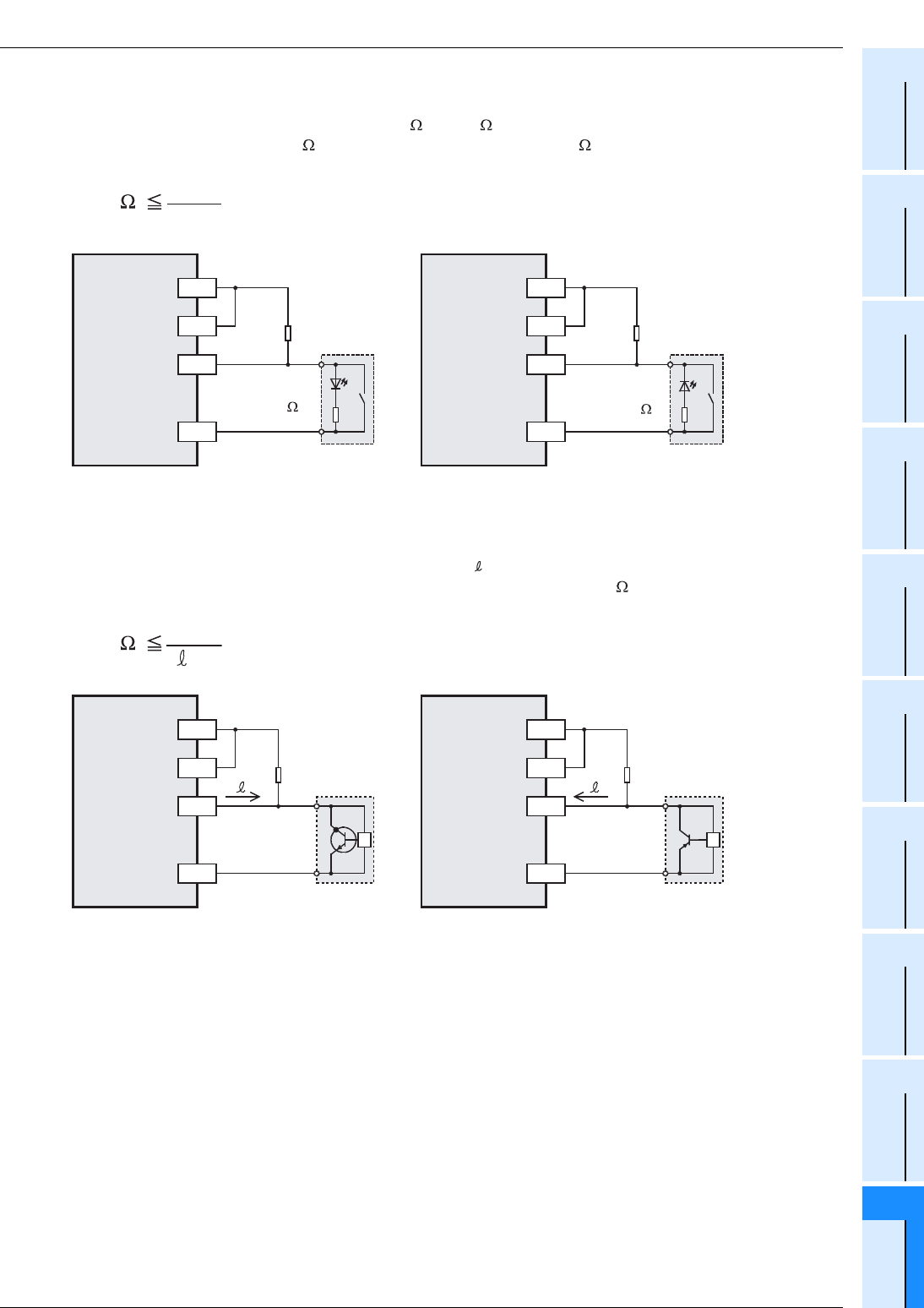
10 Input Wiring Procedures
10.2 24V DC input (Sink and source input type)
145
FX3G Series Programmable Controllers
User's Manual - Hardware Edition
1
Introduction
2
Features and
Part Names
3
Product
Introduction
4
Specifications
5
Version and
Peripheral
Devices
6
System
Configuration
7
Input/Output
Nos., Unit Nos.
8
Installation
9
Preparation and
Power Supply
Wiring
10
Input Wiring
3. In the case of input device with built-in parallel resistance
Use a device having a parallel resistance, Rp (k ), of 15k or more.
If the resistance is less than 15k , connect a bleeder resistance, Rb (k ), obtained by the following formula
as shown in the following figure.
4. In the case of 2-wire proximity switch
Use a two-wire proximity switch whose leakage current, I is 1.5 mA or less when the switch is off.
When the current is larger than 1.5mA, connect a bleeder resistance, Rb (k ), determined by the following
formula as shown in the following figure.
Rb
4Rp
15-Rp
(k )
PLC
(source input)
X
24V
Rp
Rb
PLC
(sink input)
X
0V
Rp
Bleeder
resistance
Rb
15k
or
more
*1
24V
S/S S/S
0V
*1 In the case of a type only for sink input,
connect the device to the COM terminal.
Bleeder
resistance
15k
or
more
Rb (k )
6
I
-1.5
PLC
(source input)
X
24V
Rb
I
PLC
(sink input)
X
0V
Rb
I
2-wire
proximity
sensor
*1
24V
S/S S/S
0V
*1 In the case of a type only for sink input,
connect the device to the COM terminal.
Bleeder
resistance
Bleeder
resistance
2-wire
proximity
sensor


















